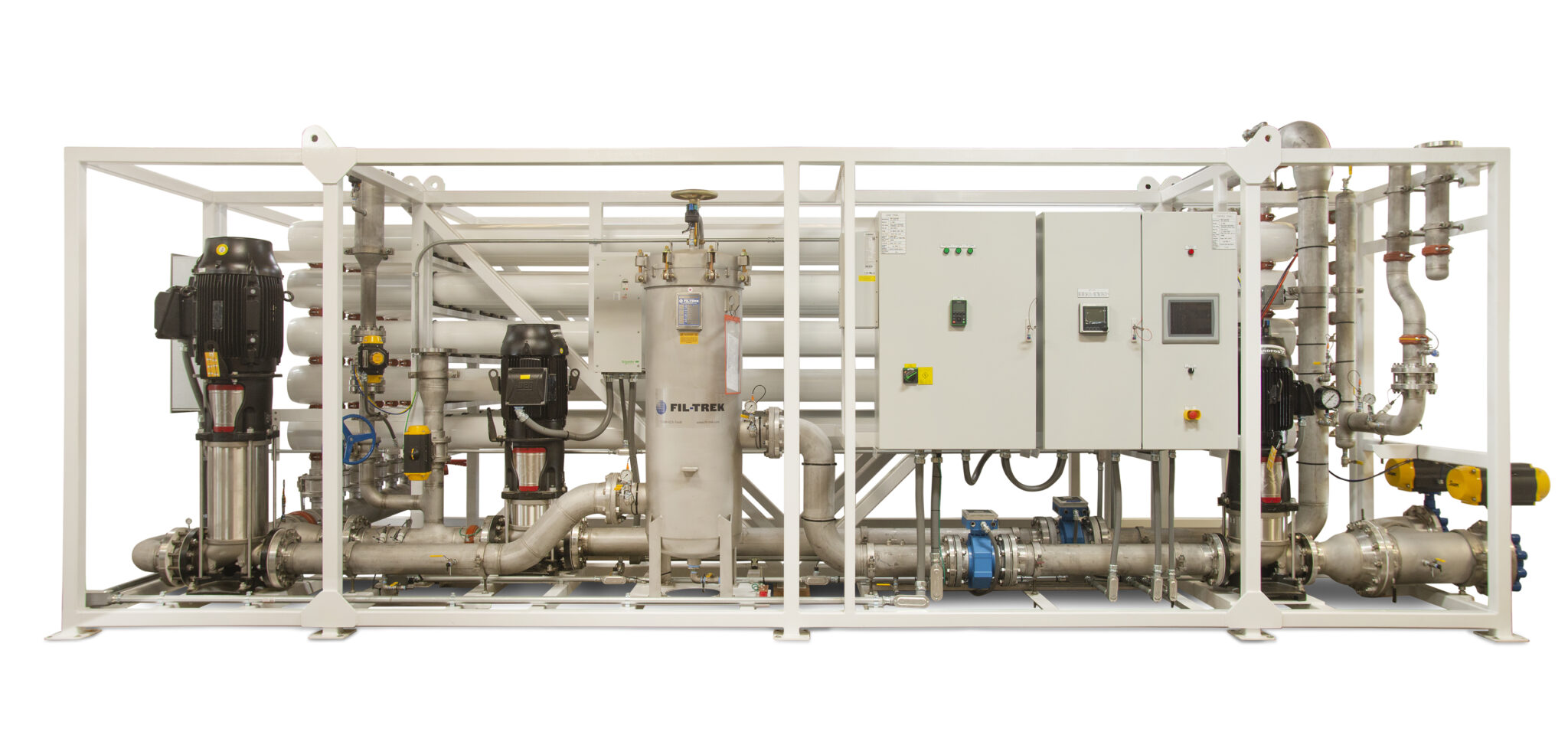
RO Concentrate/Brine Recovery
In recent years as water conservation efforts have increased, the water industry is demanding more from our RO systems. The typical 75% recovery design that was standard for many years is extinct. We are now seeing RO systems designed with recovery rates that push inhibition rates to the edge and beyond, with mixed results.
At Puretec, we’ve built and serviced high recovery RO systems utilizing such technologies ranging from CCRO to brine recovery units and we can help guide you to choosing the right technology for your water system.
Get A QuoteBesides typical RO systems, we see the following developments being adopted in the industry:
Closed Circuit Reverse Osmosis (CCRO)
Unlike conventional RO systems that continuously flow water through membranes in an open-loop configuration, the CCRO system recirculates water in a closed-loop or “closed circuit” during each filtration cycle. This approach allows for higher pressure and more concentrated contact with the membranes, improving the efficiency of the solute (e.g., salt) removal process. The CCRO system dynamically adjusts the flow and pressure within the closed circuit based on the water quality and desired recovery rates.
In a CCRO system, the membranes are arranged in stages. After each filtration cycle, a portion of the concentrate (the more concentrated solution remaining after water has passed through the RO membrane) is expelled from the system, and fresh feed water is introduced. This process is repeated in cycles, with the system automatically adjusting the number of cycles and recovery rates to optimize water production and minimize waste. By recirculating the feed water through the membranes multiple times, Desalitech claims water recovery rates significantly higher than traditional RO systems, often exceeding 90%. However, results are highly dependent on-site specifics.
Flow Reversal Reverse Osmosis (FRRO)
The fundamental operation of an RO system involves pressurized feed water being passed through a semipermeable membrane to separate clean water (permeate) from dissolved solids (concentrate). In traditional RO systems, water flows in a constant direction, leading to accumulation of contaminants on the membrane surface, which can cause fouling and scaling. FRRO technology introduces a dynamic change in the direction of the feed water flow across the membrane at regular intervals. By periodically reversing the flow, the system effectively dislodges and flushes away the accumulated particles and scaling agents from the membrane surfaces. This reversal process alternates the roles of the feed and concentrate channels, thereby ensuring a more uniform cleaning of the membrane surface.
Forward Osmosis (FO)
Forward osmosis uses a semi-permeable membrane to draw fresh water through the membrane from a less concentrated solution to a more concentrated draw solution, exploiting the natural osmotic pressure gradient between the two solutions. This gradient drives water from a feed solution with low solute concentration (e.g., seawater) to a draw solution with high solute concentration. The process doesn’t require the high hydraulic pressures typical of RO, potentially reducing membrane stress and fouling. FO is particularly useful for treating high-salinity or industrial wastewater streams.
Pulse Flow Reverse Osmosis (PFRO)
Pulse Flow technology incorporates intermittent, pulsating flow patterns of feed water through the RO membranes, rather than a constant, steady flow. This pulsation is achieved by varying the flow rate and pressure at regular intervals or cycles. The system introduces pulses or surges of water with higher flow rates intermittently, followed by periods of lower flow rates or brief pauses. This pulsating action creates varying shear forces across the membrane surface, that claim to help dislodge particles, colloids, and other foulants that accumulate on the membrane surface. PFRO can be helpful in desalination plants, industrial wastewater treatment facilities, and any application where RO systems are used to treat feed water with a high fouling potential.
What do you recommend?
Each of these technologies offers challenges that the industry is just beginning to wrap their arms around. We’ve seen successful outcomes and we’ve also seen absolute disasters. The biggest mistake you can make is assuming that scale inhibition rates are 100 % predictable and that feedwater chemistry will remain constant.
Instead of purchasing a new RO system, we’ve been successful with simply adding on a brine recovery RO that takes existing RO concentrate and sending it through a brine recovery RO system to recover anywhere from 5% to 80% of the concentrate stream.
By taking this approach, not only is it more economical, but it’s also much safer. This is because if the brine recovery RO goes down, then you still have your primary RO to produce permeate water. If you have a CCRO, FRRO, PFRO, or FO, then when the system goes down, you are completely shut down. And keep in mind that these high recovery systems are more prone to failure with more controls and higher scaling tendencies than a typical standard RO.
